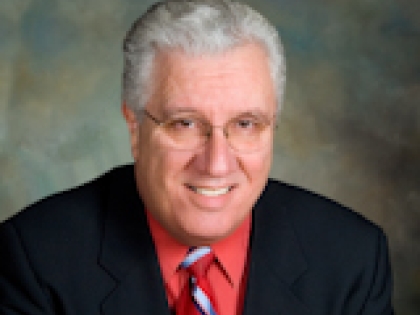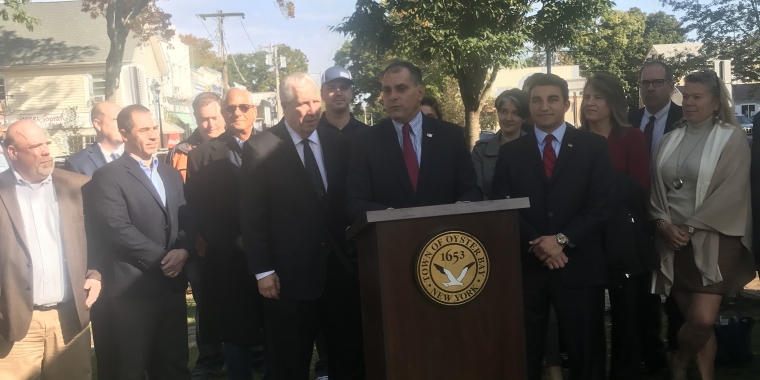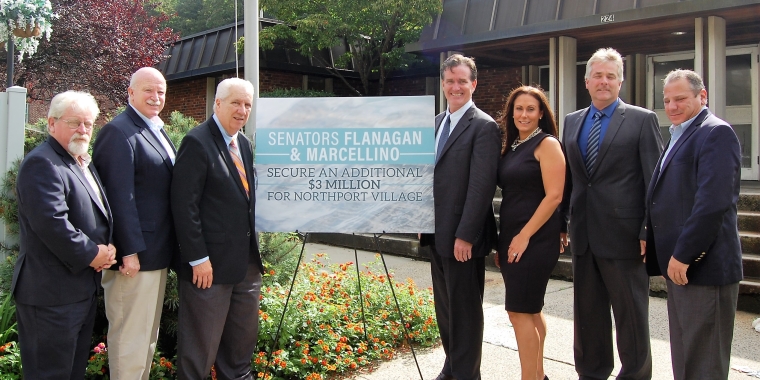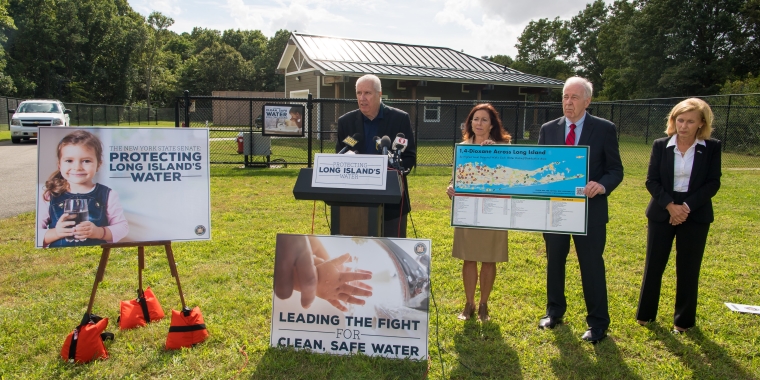
Marcellino Holds Hearing On Long Island Sound Tunnel Proposal
Senator Carl L. Marcellino (R-Syosset) Chairman of the Senate Environmental Conservation Committee today held a joint hearing with the Senate Transportation Committee on the Long Island Sound Tunnel proposal.
This hearing afforded the committees the opportunity to question the developer about the project and to hear from government officials that represent the areas most directly affected. According to Senator Marcellino this is just the opening to an array of steps in the process.
"This is a serious proposal by serious people. It must be fully reviewed before we change the landscape of Long Island forever," Senator Marcellino said.
In preparation for the hearing Senator Marcellino visited the East Side Access tunnel project that will connect the Long Island Rail Road’s Main and Port Washington lines to a new terminal beneath Grand Central Terminal in Manhattan. There he witnessed first hand the workings of a 200 ton tunnel boring machine and the process used to remove the debris.
"Seeing first hand the process of building a tunnel gave me new insight to this proposal. The magnitude is astonishing," said Senator Marcellino.
"Through the course of this hearing I had the opportunity to ask many of my questions and questions of my constituent. Now I have a fuller understanding of what will be involved and the effect on the community," said Senator Marcellino.
Senator Marcellino had mailed the affected community and asked them to submit their concerns. In addition, on his web site, www.senatormarcellino.com, he has a quick poll to get the pulse of the community.
The proposed Long Island Sound tunnel is approximately 16 miles in length and would extend from Route 135 (Seaford-Oyster Bay Expressway) in Syosset, to the intersection of I-287 and I-95 in Rye, NY. The world’s longest roadway tunnel built in Norway is 15.2 miles
The project would be funded by the private sector and cost approximately $10 billion. The toll is estimated at $25 dollars one way.
The tunnel is expected to carry between 59,000 and 79,000 vehicles per day when it is completed in 2025. According to the Triborough Bridge and Tunnel Authority, annual average daily traffic in 2006 on the Queens Midtown Tunnel was 79,359.
Testifying at the hearing was Supervisor John Venditto of the Town of Oyster Bay,Vincent and Michael Polimeni of Polimeni International LLC, the engineering firm of Hatch Mott MacDonald, Dr. William Kelly, NYS Geologist, Professor Stanley Klein, Long Island University, Mayor Steven Otis of Rye, Valerie O’Keefe Supervisor of Mamaroneck, Mayor Drew Fixell of Tarrytown, Michael White, Executive Director of the Long Island Regional Planning Board and Mayor Harry Anand of the Village of Laurel Hollow.
"I thank everyone who came to offer their expertise and thoughts," concluded Senator Marcellino
For Information on the Cross Sound Tunnel Proposal Click Here
FROM THE ASSOCIATED PRESS
NY Long Island Tunnel, 1st Ld-Writethru 01/25/2008 04:44:16 PM
Developer proposes world's longest highway tunnel in NY
It would be the world's longest highway tunnel _ a more than 16-mile
stretch under Long Island Sound that could help ease the chronic traffic
congestion on New York's clogged highways.
The estimated price tag on the tunnel is $10 billion _ and it wouldn't cost
taxpayers a dime. A developer wants to build the tunnel with private money,
recouping his costs by charging drivers $25 each way to cross the tunnel
between Oyster Bay and Rye, N.Y., and by selling advertising, including the
possibility of selling the naming rights.
While not expected to be completed before 2025, the tunnel project received
renewed attention this week when a state Senate committee held a hearing
about the proposal.
The developer, Vincent Polimeni, admitted his proposal was initially met
with "smirks and skepticism." But he added, "the more people looked at the
plan, the larger circle of intrigued citizens who said, `tell me more.'"
The tunnel also brought back memories of Robert Moses, the modern icon of
municipal planners, who was rebuffed in his bid to build a bridge over Long
Island Sound three decades ago. Moses was savaged by officials on Long
Island over the project.
"Considering that we're on Long Island, I'm amazed they didn't run me out
of the room," Polimeni cracked during a recess Thursday at the hearing. "I
think it's a good sign."
Polimeni, a longtime developer of malls and office buildings in the New
York area and who has done the same in cities across Poland for the past
decade, says the tunnel would help alleviate traffic congestion and give
travelers between Long Island and New England an option that eliminates the
need to traverse New York City.
State Sen. Carl L. Marcellino, who lives just blocks from where the
southern terminus of the proposed tunnel would be built, was among the
skeptics but has not indicated whether he will support the proposal. He
noted that despite being privately funded, "there will be approvals
required from governmental entities before this thing can go forward."
Bear, Stearns & Co. Inc. is lending its investment banking advice to
Polimeni, who has paid $250,000 out of his own pocket for engineering
studies.
Polimeni has also employed the engineering and construction firm Hatch Mott
MacDonald, a company that has been involved in tunnel projects worldwide,
including the "Chunnel" that connects Great Britain and France via rail.
At between 16 and 18 miles, depending on final design specifications, the
Long Island Sound project would eclipse the 15.2-mile Laerdal Tunnel in
Norway as the world's longest highway tunnel.
It would consist of two tubes that would convey three lanes of traffic
each, as well as a central tunnel to be used for maintenance access and
emergency ventilation and egress _ all built below the bed of the Sound. A
traditional toll plaza would be eliminated in favor of a high-tech system
similar to E-ZPass or a license plate scanner that could debit a driver's
bank account for the toll fee.
Oyster Bay Town Supervisor John Venditto, who described the project as
"intriguing to say the least," nevertheless said his initial reaction was
"it is unrealistic." He promised, however, to review "as much empirical
data as we possibly can so we don't have to make knee-jerk reactions and we
can make an informed decision."
Elected officials from the proposed tunnel's northern terminus were not as
congenial.
"We cannot in Westchester absorb the additional traffic that this tunnel
would bring to our roads," said Rye Mayor Steven Otis. "It simply would
make our roads non-functional."
He said the Westchester Municipal Officials Association voted in December
to oppose the project. "Our hopes are that the project will be withdrawn,"
Otis said.
Polimeni contends the estimated 80,000 vehicles a day using the tunnel
would simply represent a shift in what roads the vehicles are using, not an
increase. He also argues the tunnel would ease air pollution because
vehicles would be traveling shorter distances to get to the same
destination.
Syosset resident Gino Longinotti said he was curious about the project, but
didn't "see it being feasible. We have traffic conditions now where all the
roads are congested."
For some, the tunnel proposal stirs memories of Moses' plans for a bridge
between Oyster Bay and Rye. The man responsible for the Throgs Neck, the
Bronx-Whitestone, the Henry Hudson, and the Verrazano Narrows bridges
ultimately failed in his bid for another span when then-Gov. Nelson
Rockefeller yielded to backlash among powerful suburban Republicans, who
rallied to defeat the bridge project in 1973.
Polimeni is not discouraged.
"Moses had the idea, only he was going to go up and over and nobody wanted
to see this," he said. The key, he said to his alternate strategy, was to
avoid a towering span and take the plan underground: "I thought, make it
stealth."



